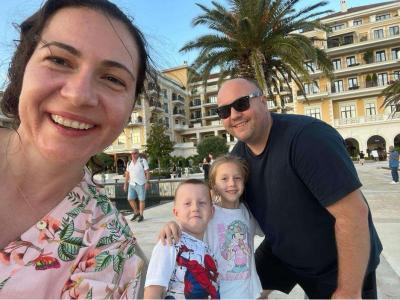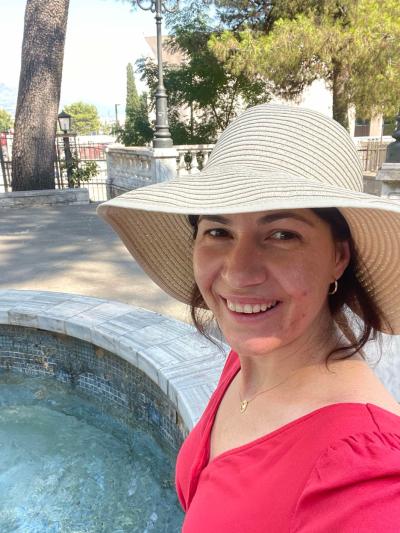Summer Adventure Series
What does summer look like for a student? What about for a professor? Well, this summer we sought to answer these questions by beginning our Summer Adventure Series! Each year we see our students and faculty embark on wonderful, unique, and often provoking journeys across Central and East Europe -- and beyond!
See below a few instances of the Adventure series, and check out our "News" feed to keep up to date with other stories!
Polish Edition: Alicia Baca and Dr. Diana Sacilowski
Over the summer CSEEES’ outreach coordinator Alicia Baca and SEELC Assistant Professor of Teaching Dr. Diana Sacilowski spent time in Poland conducting research for personal projects as well as study. In addition to research and travel, they collaborated with their colleague Dr. Julia Keblinska on one of CSEEES’ upcoming online learning modules called “Exploring Poland.” This module will be a free to use resource for K-14 educators and students as well as for anyone else who is interested in learning more about the country and its culture and history. Read more below to learn more about what they did while traveling around Poland.
Alicia Baca
While most may know me as CSEEES’ outreach coordinator, when I joined the Center, I was also assigned the role of program coordinator for our Polish Studies Initiative (PSI). Admittedly, I did not have any previous training in this field before coming to Ohio State as my undergraduate and graduate degrees are in Russian studies. In an effort to fill that gap in my knowledge and to help me better connect with the Polish American communities that CSEEES works with I have been studying Polish for the past two years. This summer I had the opportunity to travel there for almost six weeks to further my own study of Polish culture and history. This trip allowed me to strengthen my language skills, collect information for the upcoming "Exploring Poland” module, and find items for a new Poland culture box that can be borrowed by K-14 educators to use in their classrooms.
During the first two weeks, I traveled around Warsaw and Wrocław and spent much of my time exploring different museums such as the National Museum in Warsaw, the Fryderyk Chopin Museum, POLIN, and many more. I also went on several walking tours where I learned more about the history of Old Town Warsaw, Jewish Warsaw, Cathedral Island, and Old Town Wrocław. I found the walking tour of Old Town Warsaw to particularly impactful as I have had an ongoing side interest in architecture and learning about how the area was reconstructed in great detail after World War II gave me a whole new appreciation for the place that I was exploring and staying in. This is something that I was very excited to highlight in the module and I am hopeful that younger students will also come admire all the effort and work that went into rebuilding this historic site. I also thoroughly enjoyed the Chopin museum. As someone who has both an academic and personal interest in folk music and music history I felt that the interactive exhibits there offered a unique way to learn more about the influence that Polish folk music had on Chopin’s work throughout his life.
The remaining month was spent in Kraków as I had been accepted into the Polish Summer Language Institute hosted by the University of Pittsburgh. While there, I spent time polishing my Polish with other students from across the globe. The program itself was an intensive one where we typically spent 6-7 hours a day in language classes, but I also made time for continued research to help with the development of parts of the module. Some notable places included the Ethnographic Museum, the Czartoryski Museum, the Market Underground Museum, and the gallery of 19th Century Polish art inside Sukiennice. The Ethnographic Museum in particular was my favorite as it houses many folk instruments from across the country including hurdy gurdies, a variety of bag and bladder pipes, jaw harps, and alpenhorns. I did try to carve out some time to relax when I could. When I was not trying to stuff my brain and notebook with as much information as possible, I hunted down a handful of the hundreds of gnome statues that are scattered all around Wrocław, went hiking in the Tatra Mountains, attended a folk arts festival in Kraków, and of course, enjoyed delicious Polish food.
This trip gave me a whole new love and appreciation for the language and culture I have been studying and I do hope to go back and visit other parts of Poland in the future. In the meantime, I am excited to share what I learned with a younger generation of students and their teachers through my outreach work here at Ohio State.
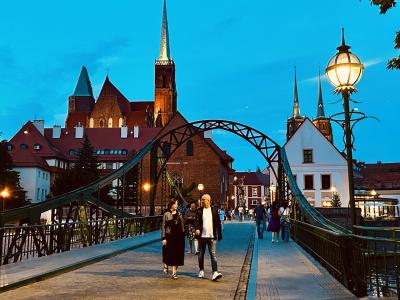
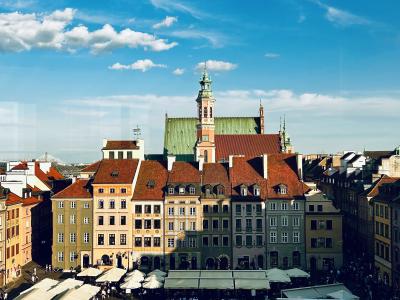
Diana Sacilowski
During July I traveled to Kazimierz Dolny, Zamość, and Lublin to conduct research for a project tentatively titled “‘Going There’: Seeing and Attending to the Muted Traces of Poland’s Jewish Past.” The project explores how various literary texts intersect with sites of memory to better understand the key ideas and methods underpinning Poland’s so-called Jewish “return,” a period, beginning in the early 1980s, that has witnessed a great revival in interest in Jewish culture and history. I primarily spent time visiting monuments, memorials, and other physical commemorative projects that engage with Poland’s Jewish history. This allowed me to build a more comprehensive picture of the various memorial practices employed during the Jewish “return” and a more detailed comparison between such sites and the literature produced during this time.
I began my research journey in Warsaw, where I visited a wonderful new temporary exhibit at POLIN, entitled “(post)JEWISH… Shtetl Opatów Through the Eyes of Mayer Kirshenblatt.” Given that I would be exploring places that once had large Jewish populations and looking at how these places today remember such populations, I thought the exhibit, which examines the Jewish history of the town of Opatów and memories and memorialization of that history, was a good way to kick things off. Inspired, I then set off on a rather whirlwind tour.
First, I went to Lublin, where I visited the “Grodzka Gate – N.N. Theater” Center, an institution dedicated to the exploration and preservation of the Jewish heritage of Lublin and the surrounding area. The Center’s museum space, structured as a kind of interactive archive, was fascinating, and it was great to learn about some of the memory projects the Center is involved in. I also re-visited Majdanek, a Nazi concentration and extermination camp in Lublin. From there, I set off to Zamość, a beautiful city in southeast Poland. Here, I visited the city’s synagogue and a number of memorial sites, including the Zamość Rotunda, a site where Poles were imprisoned and executed by Nazis during World War II, as well as a monument placed at the site of one of the devastated Jewish cemeteries in the city. I also did a walking tour of the Zamość based on Piotr Szewc’s text Zagłada (Annihilation; 1987). The book features a narrator trying to paint a picture of this town before World War II, before its Jewish community was destroyed, and I wante
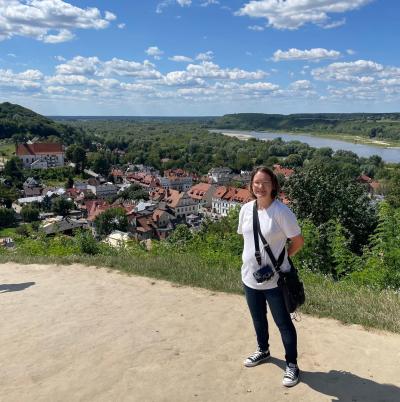
d to try to walk in the narrator’s steps and map out the book on the actual streets it mentions. The experience definitely gave me a more nuanced perspective of what the text is trying to do. My journey came to end in Kazimierz Dolny, a picturesque town on the Vistula that also once had a large Jewish population. I studied a monument placed on the site of a former Jewish cemetery here as well and walked the town in search of traces of matzevot, Jewish gravestones, that were taken from the destroyed cemeteries in the area and used as building materials in walls and other edifices. The trip as a whole was a heavy experience, at times quite emotional, but also very informative and enlightening. I’ve read about these sites and memorials, but seeing them in person gave me a deeper understanding of the preservation (and sometimes lack thereof) of Jewish heritage taking place in Poland.
I look forward to sharing more about some of the things I saw in a Polish Studies Initiative lecture in the near future. This trip also gave me the opportunity to take some pictures and collect information to use for the upcoming CSEEES "Exploring Poland” module, which I’m excited for everyone to see as well!
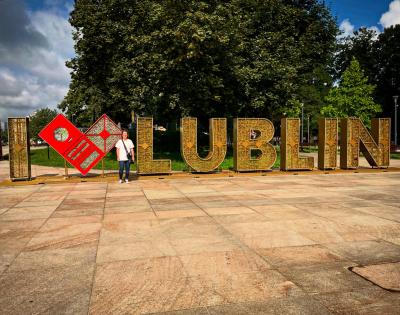
Dr. Hashamova in Bulgaria and Estonia
"The first half of the summer offered more work than rest with three presentations on Bulgarian diaspora schools, identity politics, and multicultural nationalism delivered in Sofia and Tallinn. My co-editor Gulnaz Sharafutdinova and I finalized our volume prospectus, Sub-Altern Russia: Ecological Selfhood and Counter-hegemonic Narratives, drafted the introduction, and received an advanced contract from U of Wisconsin Press, a step closer to the finish line. Aside from these excitements, short trips to various places in Bulgaria provided real respite, and more fun is waiting ahead, a planned vacation."
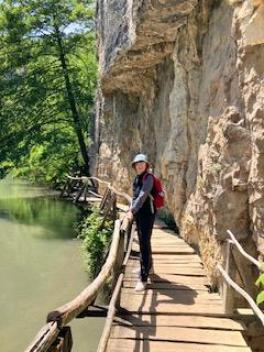
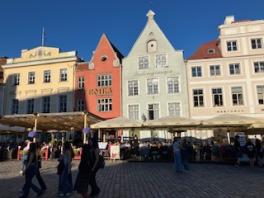
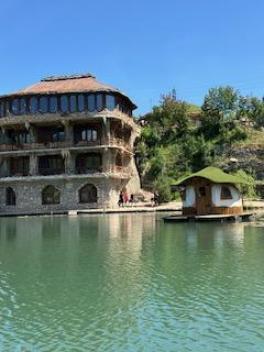
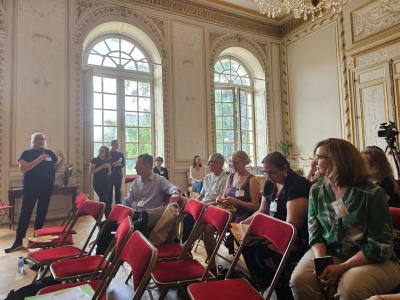
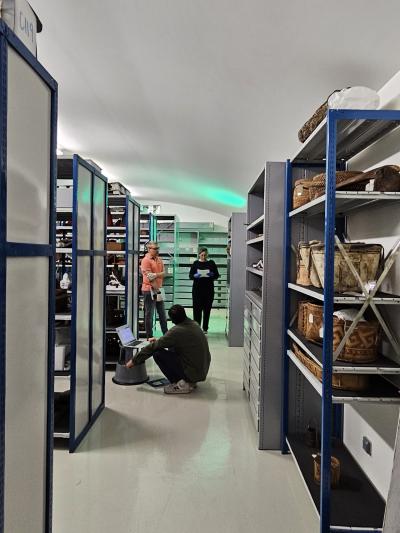
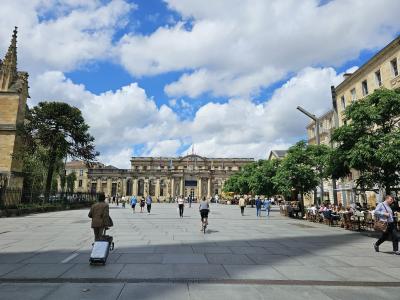
From the Chair: Dr. Brintlinger's Summer Adventures
In May Prof. Brintlinger travelled to Warsaw, Poland for some meetings and to give a talk at the University of Warsaw on Chekhov and the Anglo-American short story. She met with all our Warsaw Fulbright alumni—Jarek Szczepański, Wojciech Lewandowski, and next year’s Fulbrighter Marko Babić—as well as the folks at the Polish Fulbright commission and other friends and colleagues across the city. A highlight was the fantastic special exhibit at Polin entitled "(post)JEWISH… Shtetl Opatów Through the Eyes of Mayer Kirshenblatt." The exhibit is on through the end of December so if anyone plans a trip to Warsaw this year, she highly recommends it. She also attended screenings at the DOCS Against Gravity Film Festival and scouted tours and locations for next year’s Global May Hungary study program (that despite its name goes to both Budapest AND Warsaw).
Prof. Brintlinger’s next stop was in Rome, where she checked in with the faculty of the Guarini Institute for Public Affairs and presented her new book, Why We (Still) Need Russian Literature in a conversation with John Cabot University faculty on the JCU terrace, overlooking the Tiber River. Like other scholars of Russia who can no longer go to that country—it’s dangerous for Americans during this war and Prof. Brintlinger has also been personally banned by the Russian Federation—she next headed to Helsinki, where the Slavonic collections at the Finnish National Library satisfied her “archival appetite.
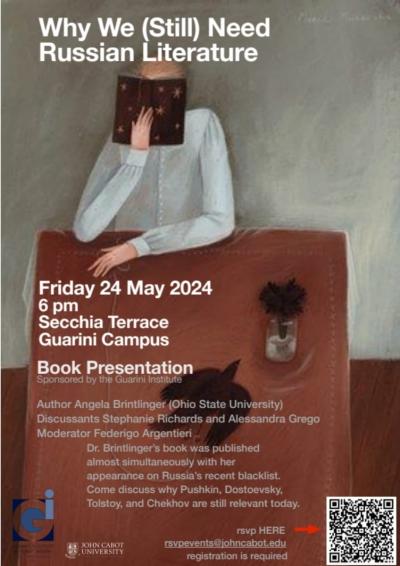
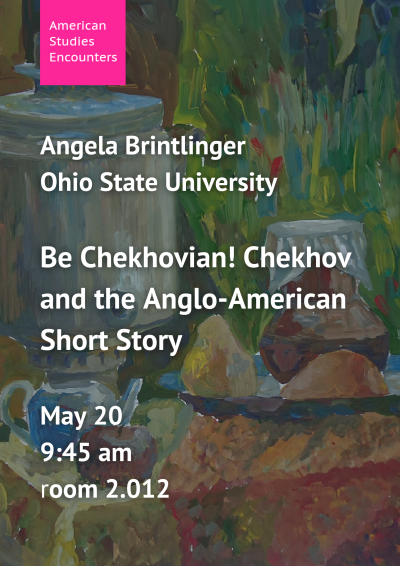
Siobhán Seigne: Bulgaria
This summer I have been studying Bulgarian in Sofia, Bulgaria. I am here on the American Council’s Balkan Language Initiative Program thanks to funding from a U.S. Department of State Title VIII Fellowship, a summer FLAS from the Slavic Center, the Felice M. Grad Scholarship from CLLC and the Paisyi Bulgarian Studies Award. Studying abroad would be impossible without these funding sources!
I am the only one in my program, which has made for a strange but serendipitous experience. My academic plan is entirely self-directed, and so I have been exploring topics related to my research interests. Additionally, as this is my third Slavic language I have been able to quickly move through grammatical features that Bulgarian shares with Russian. This has left me plenty of time to grapple with the many ways that Bulgarian differs from Russian. By the end of my program, I will have completed the B1-B2 Textbook despite starting from absolute zero at the New Year. Amazing things, New Year’s resolutions…
Besides classes I have done a lot of travel with my host family. We have visited countless cities and villages around the country, giving me a good feel for the physical and cultural landscapes of Bulgaria. My favorite place has been Veliko Tarnovo because of the stunning views and old houses in the Bulgarian revival style.
In my free time I have been writing book reviews (including one with fellow student Michelle Verbitskaya!) and working on my article manuscript. All in all, it has been an extremely productive summer. I’m looking forward to returning to Columbus in a few weeks to begin the teacher training workshop!
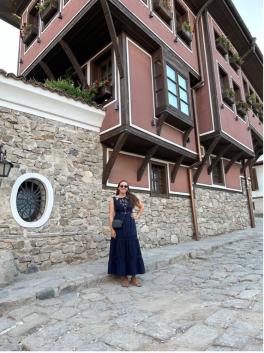
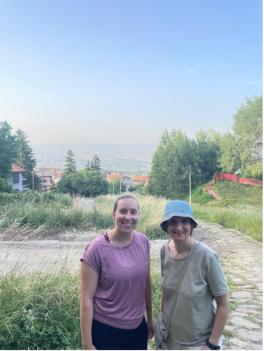
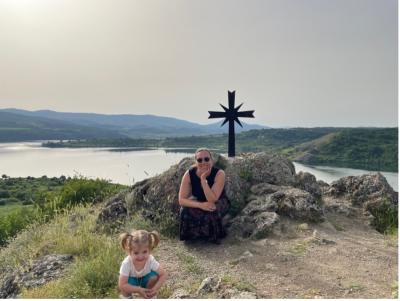
The summer of 2024 turned out to be quite busy with many travels, conferences, and meetings with colleagues. It began with a visit to Dartmouth College in late May, where I delivered a paper on my ongoing book project about the environmental and social history of Novaya Zemlya. Additionally, I gave a lecture to undergraduate students on my ethnographic research in the Indigenous religious revitalization in the Altai Republic in Siberia.
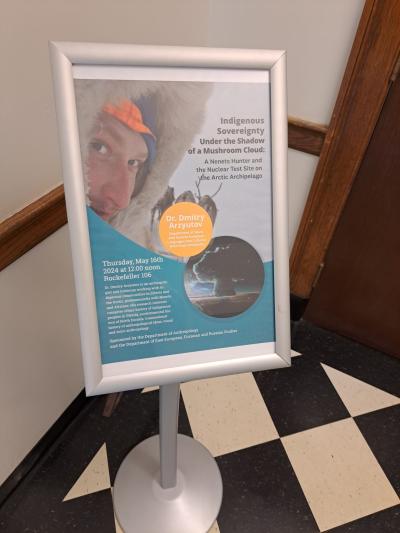
Shortly after, I flew across the ocean to Bodø, Norway, to attend the International Arctic Congress 2024, a major venue for Arctic social sciences. Scholars and policymakers from all over the Arctic gather every three years to discuss pressing issues in this transnational region, often considered a planetary barometer of climate change. At the conference, I co-chaired a panel on Siberian and Arctic voice- and soundscapes with Dr. Richard Fraser of UiT The Arctic University of Norway. The panel brought together many of our dear colleagues, and it was a pleasure to see so many familiar faces. In my paper, I explored the significance of noise and voice in old audio recordings among the Indigenous Nenets and Altai communities and metropolitan archivists and audio engineers who curate and digitize these recordings. The conference was rich with meetings that often extended late into the night and were always inspiring.
Soon, I had to trade the stunning northern landscapes of Norway for incredible Bordeaux in southwestern France, where the University of Bordeaux-Montaigne hosted the conference “The Indian Citizenship Act at 100: Indigenous Rights, Indigenous Futures.” This event brought together a large group of leading scholars from/working with Indigenous communities in North America and neighboring regions. Dr. Laura Siragusa from our department and I delivered talks about the Russian North and Siberia. In my paper, I focused on the meaning of Indigenous sovereignty on the archipelago of Novaya Zemlya in the Russian Arctic, a history marked by competitive colonization and tragic militarization, leading to the forced relocation of local hunting communities while nuclear bombs were being tested. The fantastic array of papers and enlightening conversations, along with the stunning architecture and food, made the conference very special. (Thank you, Professor Lionel Larré, as well as the University of Nebraska Press, Virginia Commonwealth University in Richmond, and the Obama Institute for Transnational American Studies, among other organizers!) When in such a historical place, one cannot miss the opportunity to visit local museums. Thanks to the curators of the Ethnographic Museum of the University of Bordeaux and my colleague Dr. Dima Oparin, I was able to visit the museum and work with its Siberian collections. (Yes, Siberian ethnographic collections can be found in many unexpected places worldwide!
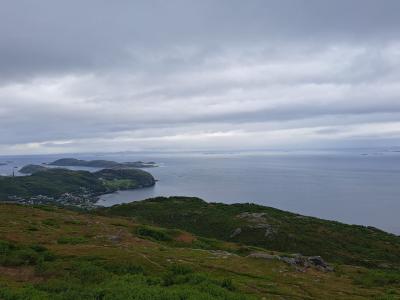
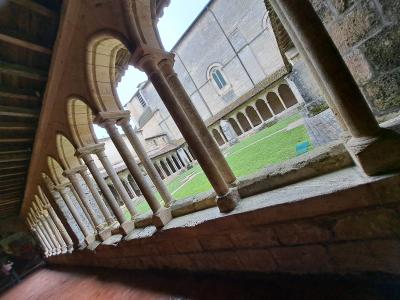
The week in Bordeaux flew by, and soon I was heading to Istanbul, Turkey, where my colleagues from the UK and I organized a seminar with our Indigenous Siberian colleagues and friends. It was a week-long workshop under one roof, living in a villa and sharing meals together, reminiscent of the Indigenous nomadic camps in Siberia where I had spent many weeks and months in the recent past. Our Istanbul workshop aimed to digitally share the world’s largest audio archive of Indigenous Siberian recordings from the Pushkin House in Saint Petersburg. Every day brought memorable moments as we listened to old recordings together, deciphering the meanings of words and phrases, and recounting the stories of those recorded and those who collected the recordings. It was a deeply emotional experience, about which we have already started writing a collaborative article.
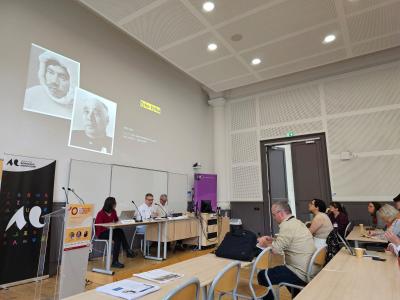
These travels and meetings made me realize how wonderful it would be to bring our students to such places to show them the "non-Russian" Russia beyond its national borders.
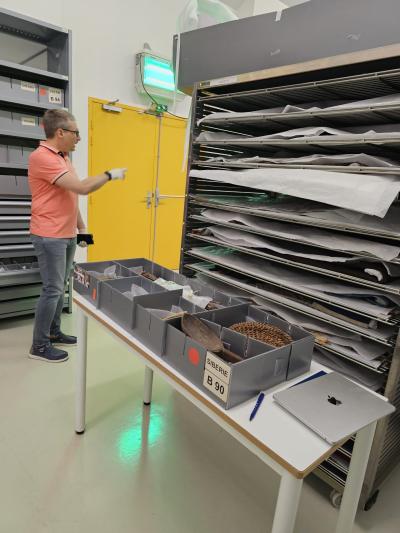
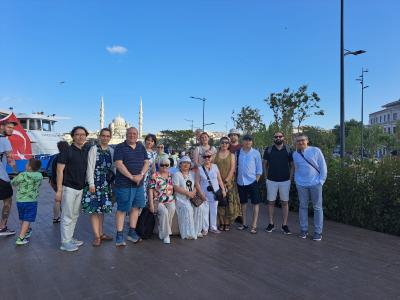
Summertime is research time, and there is no place I would rather go to for research than the Czech Republic. Arriving to Central Europe always feels a bit like returning home—also because my family’s roots lie in Lower Silesia, in the borderlands of today’s Czech Republic and Poland.
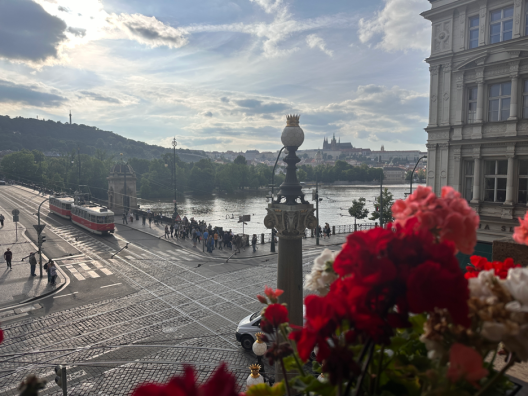
I spent three weeks at the National Archive and the National Library in Prague, collecting material for my next book, a history of the leading socialist Czechoslovak state publisher. It is a history of resistance to and compliance with the authoritarian state, of navigating global isolation and openness. It reveals the fascinating creative energy, even genius, of writers, translators, editors, and artists. The National Archive gave me a look behind the scenes. Reading their correspondence, I came to understand how the publisher communicated with the government and the police, with writers and publishers abroad.
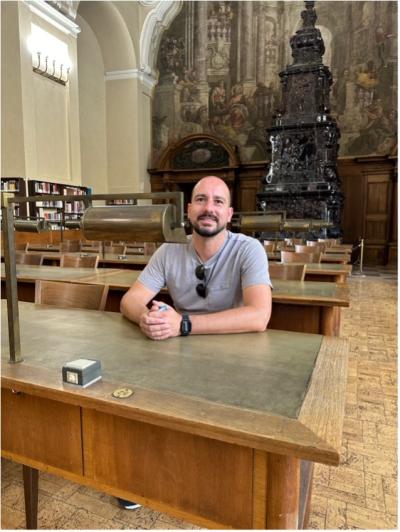
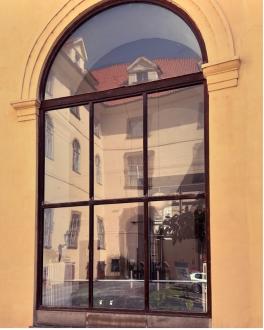
Whenever I travel, I try to go to new places outside major cities. This time, a side project brought me to several smaller cities in the Czech Republic. I traveled to Pardubice and Liberec to look at something rather morbid: crematoria. In the First Czechoslovak Republic (1918-1938), cremation became closely intertwined with ideas of a modern society. It is also the theme of a film I am currently writing about (Juraj Herz’ 1969 The Cremator), so I wanted to see the places in person.
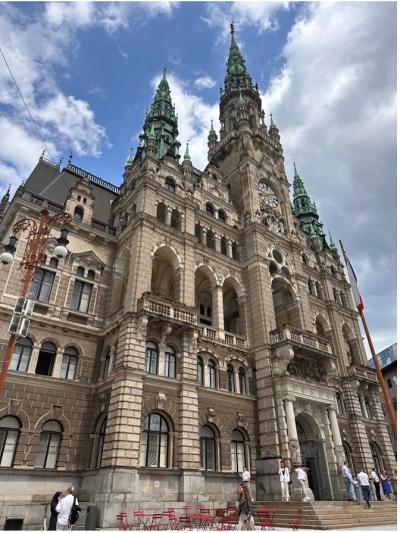
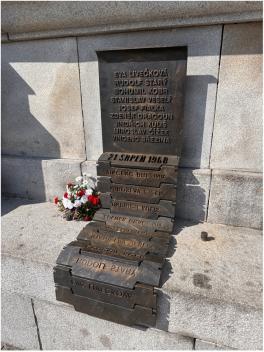
But even in Prague, there’s so much to do. I spent my weekends at museums and exhibitions of 20th-century art, saw a stage adaptation of one of my favorite novels, Karel Čapek’s Hordubal (1933), at the National Theater, and caught up with local colleagues. Fueled by excellent Czech food, I browsed the used book stores and walked around the city to look at old and new architectural favorites. In my mind, I keep taking notes for things to look at on a study abroad: I really hope that I will be able to travel to Prague and Central Europe with our students in the foreseeable future!
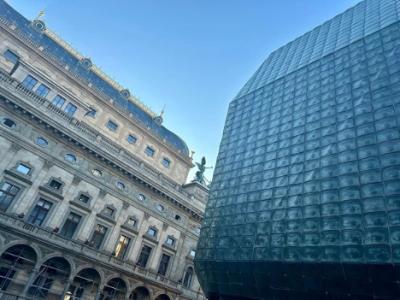
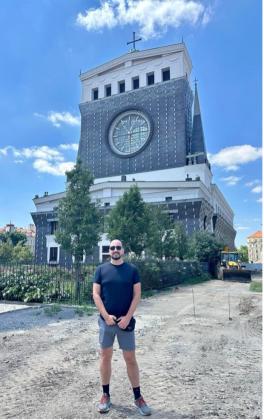
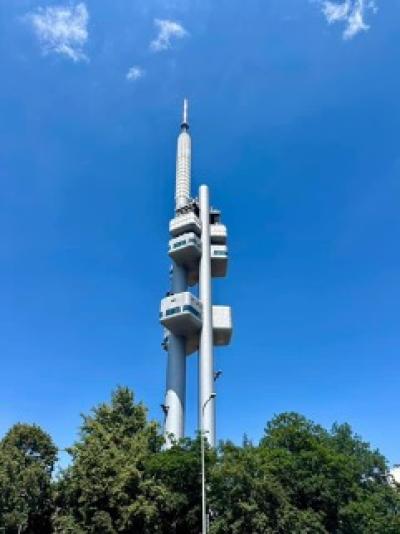
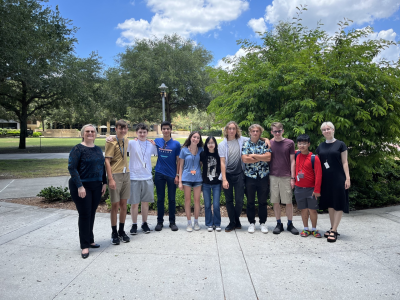
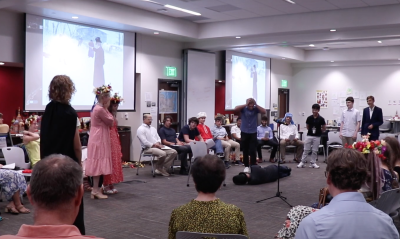
I am spending my summer in Montenegro, conducting research on the Russian diaspora, while also spending time with family and friends, and enjoying the food, sun, sea, and summer cultural programs.
I want to express my gratitude to the Global Arts and Humanities Special Grants Initiative for providing the “Conflict, Crisis, and Im/mobility” grant that funded my trip.
In June, I attended a lecture by Professor Victor Vakhshtayn on the responsibility of culture as a subject of sociological analysis. The lecture took place in the Cultural Center Auditorium in Budva and was organized by the Faculty of Liberal Arts and Sciences (FLAS). FLAS is the first state-accredited Russian “university in exile” and the first liberal arts model of education in the Balkans. It was established by former professors from the Moscow School of Social and Economic Sciences (MSEES, or Shaninka) in Montenegro in 2022, following the war in Ukraine, censorship of liberal arts programs, and Russia’s withdrawal from the Bologna Process. Starting in September 2024, students can enroll in a three-year FLAS bachelor’s program in English and receive international diplomas in six offered majors: Art History, Cross-Cultural Linguistics, Digital Humanities, Media Studies and Journalism, New Political Science, Social Theory, and Sociological Research. For more information, you can visit their website at https://liberalarts.me.
From July 1-7, I attended FLAS Beach University “Perception of Reality: Sociology of Game and Fantasy” in Donje Lastve, taught by Professor Vakhshtayn. During the course, we studied texts by Alfred Schutz, William James, Erving Goffman, and Gregory Bateson, and engaged in debates on sociological topics against the stunning backdrop of the Mediterranean. I thoroughly enjoyed observing Professor Vakhshtayn's teaching methods and his intellectual and lively discussions with the students.
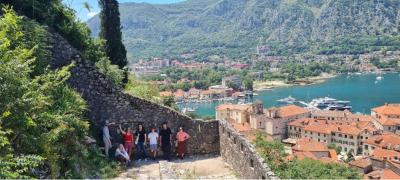
On July 14, I visited the opening of a solo exhibition in the Montenegro European Art Community of the renowned street artist Philippenzo, known for his anti-war graffiti works “Izrossilovanie,” “Swan Lake,” “Twenty,” and “Bayu-Bai.”
Philippenzo is an exiled artist who is currently on the wanted list and facing persecution for his artistic activism under the charges of “vandalism motivated by political hatred.”
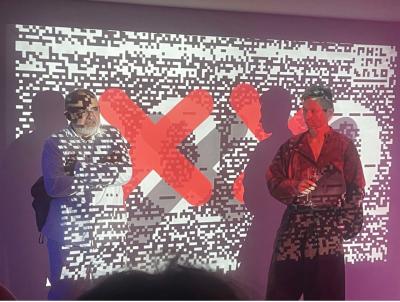
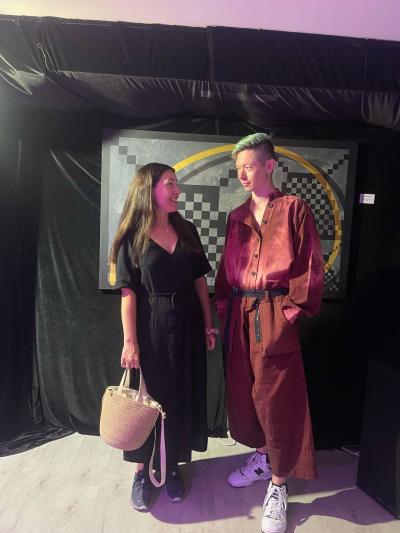
On July 11, I attended a conference organized by the Association of Montenegrin Publishers. At the conference, prominent writers, historians, and journalists discu
ssed the impact of the anti-war movement on politics and culture in Montenegro between 1991 and 2001 and promoted the anthology “Literature Against the War.” The anthology contains prose and poetry texts of notable Montenegrin writers, such as Marko Vešović, Vitomir Vito Nikolić, Husein Bašić, Sreten Asanović, Jovan Nikolaidis and others, who raised their voices against the war in the 1990s despite the threats from the authorities and criminal organizations.
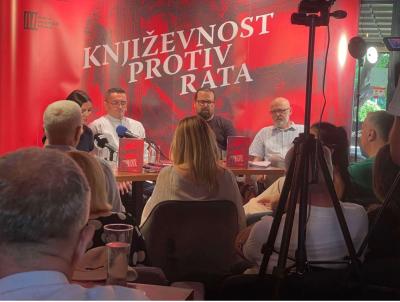
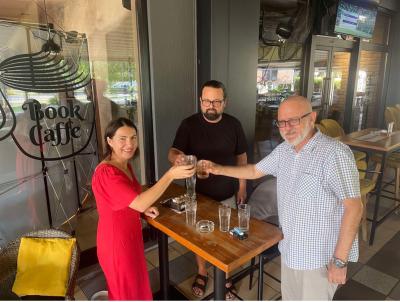
During my stay in Montenegro, I also visited numerous museums, galleries, and festivals. I especially enjoyed the International Festival of Tambura Orchestras and the launch of the 23rd issue of the journal “Kod” dedicated to the promotion of culture, literature, and science of the Montenegrin minorities, both of which took place in my hometown Bijelo Polje.
I would like to use this opportunity to share a painting called “SFF After Party” (2023) by two talented artists from Bosnia and Herzegovina, Rikardo Druškić and Hanna Dujmović. The painting is currently exhibited at the Modern Gallery in Podgorica as part of Hanna Dujmović’s showcase “Theatrum Imaginativum.”
Apart from working on research, I made sure to enjoy the summer by spending time with my family. I took a quick break from the Beach University to hang out with my brother in Tivat.
Montenegro experienced exceptionally high temperatures this summer. I found it refreshing to cool off in the fountain when I couldn't be by the sea. ☺
The summer has been wonderful so far. I hope to spend the rest of it at Ada Bojana before the start of the new semester, which I am already looking forward to.
